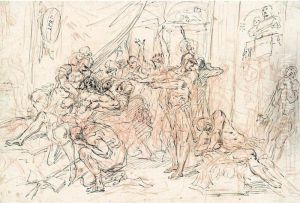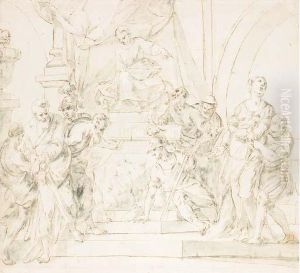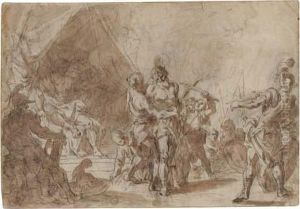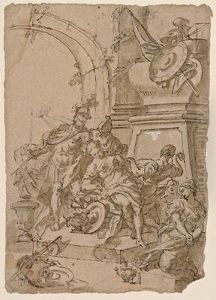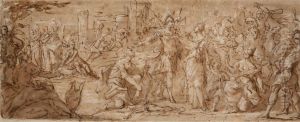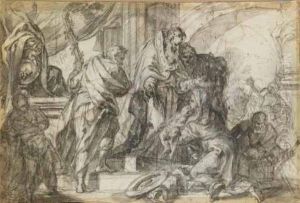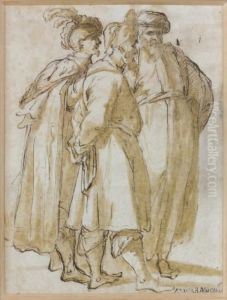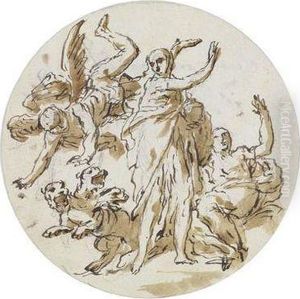Giovan Battista Marcola Paintings
Giovan Battista Marcola was an 18th-century Italian painter, born in 1736 in Verona, a city rich in art and culture in the Veneto region of Italy. Marcola's artistic journey began in his hometown, under the influence of the vibrant Veronese artistic tradition that had been flourishing since the Renaissance. His early works and development were significantly shaped by the Veronese context, a place where the legacy of great artists such as Paolo Veronese still lingered. Marcola's style evolved within this artistic milieu, absorbing and reinterpreting the lessons of the past masters.
Marcola's oeuvre is characterized by religious and historical paintings, showcasing a mastery of composition and a keen attention to detail. His works often depicted themes from the Bible and classical antiquity, painted with a delicate sensitivity to color and light. This sensitivity reflected the broader trends of the 18th century, which favored a more elaborate and decorative approach to painting, blending elements of the Baroque and the emerging Rococo style. Marcola was particularly adept at integrating these influences into his work, creating pieces that were both evocative of the grandeur of the past and reflective of the changing tastes of his time.
Throughout his career, Marcola remained closely connected to Verona, but his works also gained recognition beyond his hometown. His paintings were sought after by religious institutions and private collectors alike, contributing to the diffusion of his reputation across the Italian peninsula. Despite this, Marcola never achieved the same level of fame as some of his contemporaries. Today, he is remembered as a skilled but somewhat overlooked figure in the rich tapestry of Italian art history.
Marcola's death in 1800 marked the end of an era for Veronese painting. His passing coincided with the closing years of the 18th century, a period of significant transition in European art as the neoclassical movement began to take hold. In retrospect, Marcola's body of work offers valuable insights into the stylistic transitions of this period, embodying the shift from the ornate qualities of the Baroque and Rococo towards a new classical simplicity. Despite the relative obscurity surrounding his name, Giovan Battista Marcola remains an important figure for those who study the nuances of Italian art's evolution during the 18th century.
